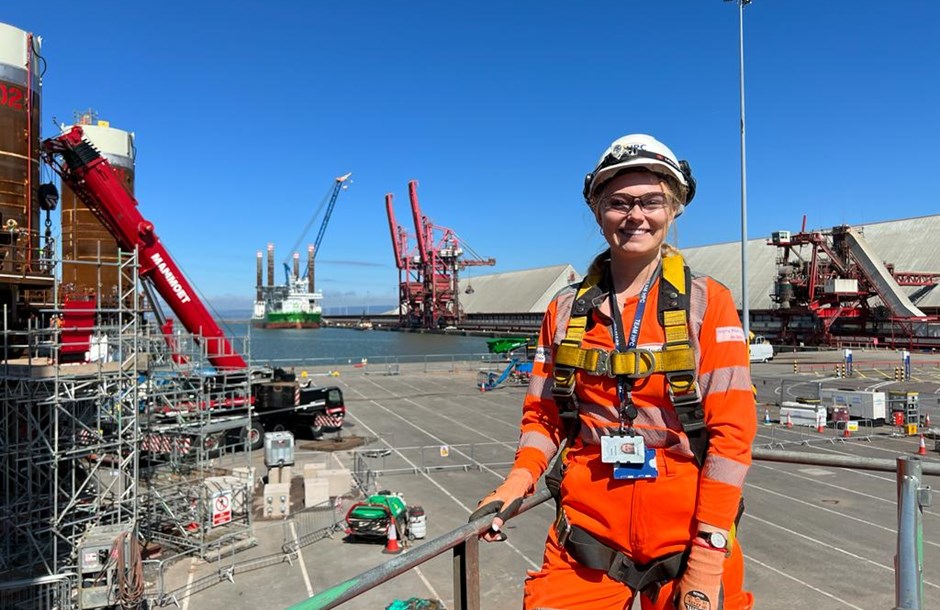Green Construction Careers: Catriona Jones

As part of our series celebrating Green Careers Week, we spoke to Catriona Jones, Graduate Materials Engineer at the leading international infrastructure group Balfour Beatty. Working across numerous teams and projects, including the Hinkley Point C project, Catriona has seen firsthand the intricacies of sustainable construction and how green construction projects develop.
Can you tell us about your background and how you initially got involved in the construction industry?
Catriona: “I joined Balfour Beatty as a Graduate Materials Engineer in 2021, working on the Hinkley Point C project, specifically on the tunnelling and marine contract. In this role, I worked on a 24/7 shift pattern with practical hands-on experience testing the nuclear-grade concrete and grout used onsite, managing site trials, and writing reports for the client under the nuclear document approval process.
After 18 months, I rotated teams and joined the Temporary Works (TW) team as a Temporary Works Graduate. Through this role I became more involved in design and liaising with the delivery team, site teams, and external temporary works designers, to procure TW designs for construction onsite to assist with building the permanent works.
I love this project as the engineering we do has never been done before. There’s a lot to learn, with the additional benefit of knowing I’m contributing to a sustainable project that will help the country meet national sustainability goals.”
Can you share your favourite green construction project that you’ve worked on, and explain what was involved?
Catriona: “The Hinkley Point C nuclear power station which will help Britain achieve Net Zero. This project has been amazing to be involved in due to the scale of work, the unique, and ‘never been done before’ engineering completed, and the project’s contribution to national sustainability targets and future energy security.”
How has the approach to sustainability in construction evolved?
Catriona: “Smaller changes are obviously quicker to enforce, so I have seen solar-powered generators and electric plants implemented instead of diesel alternatives. In terms of larger changes, I know the industry is investing in research advancements for concrete alternatives to help cut carbon emissions further, and once durability results have been proven, I know these materials will be implemented more widely in future.”
Which green construction trends do you predict will gain traction in the coming years?
Catriona: “Advancements in BIM and digital construction to make the process more efficient, saving money and resources, potentially with some inclusion of Artificial Intelligence to help this. As mentioned above, I think once the life span and durability of concrete alternatives have been proven in real-world examples, these materials will be more widely utilised.”
Feeling inspired? Discover more about sustainability in construction and green construction careers today…
If you want to learn more about sustainability in construction or discover the different green construction careers, get in touch with Go Construct
